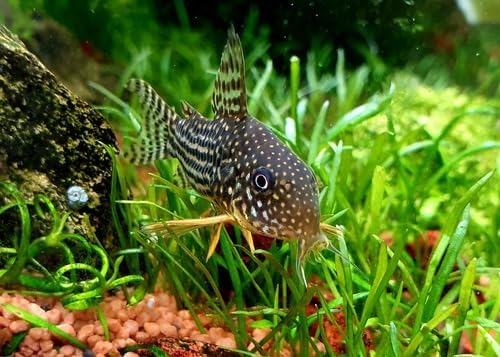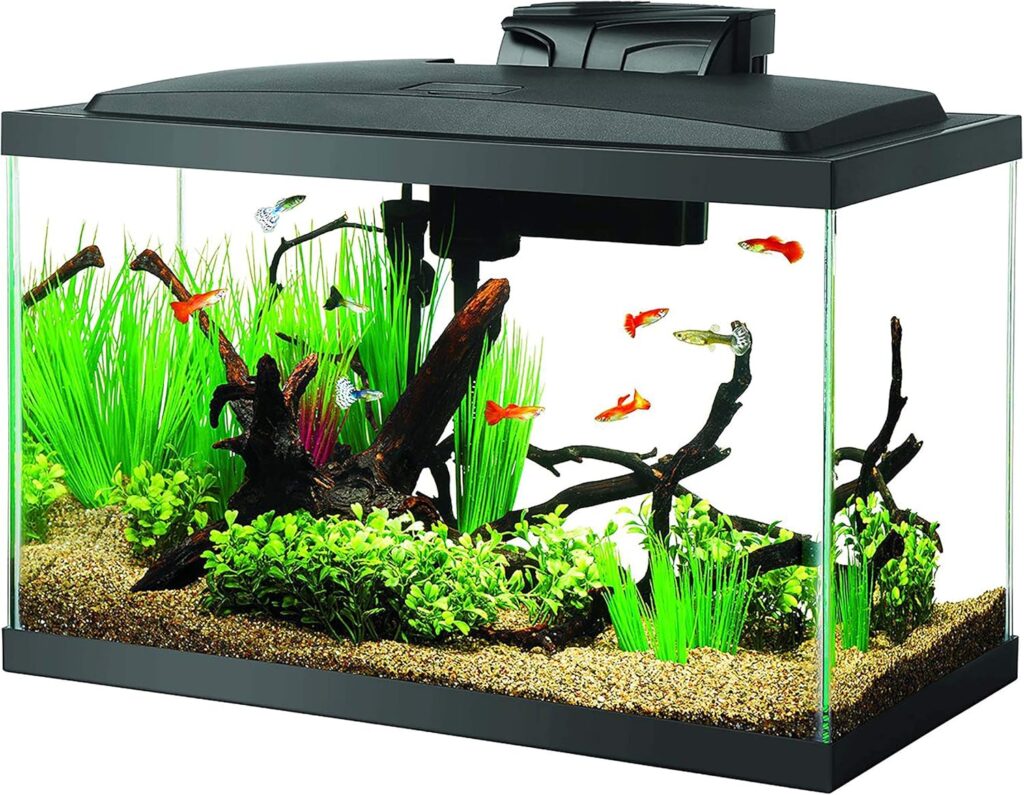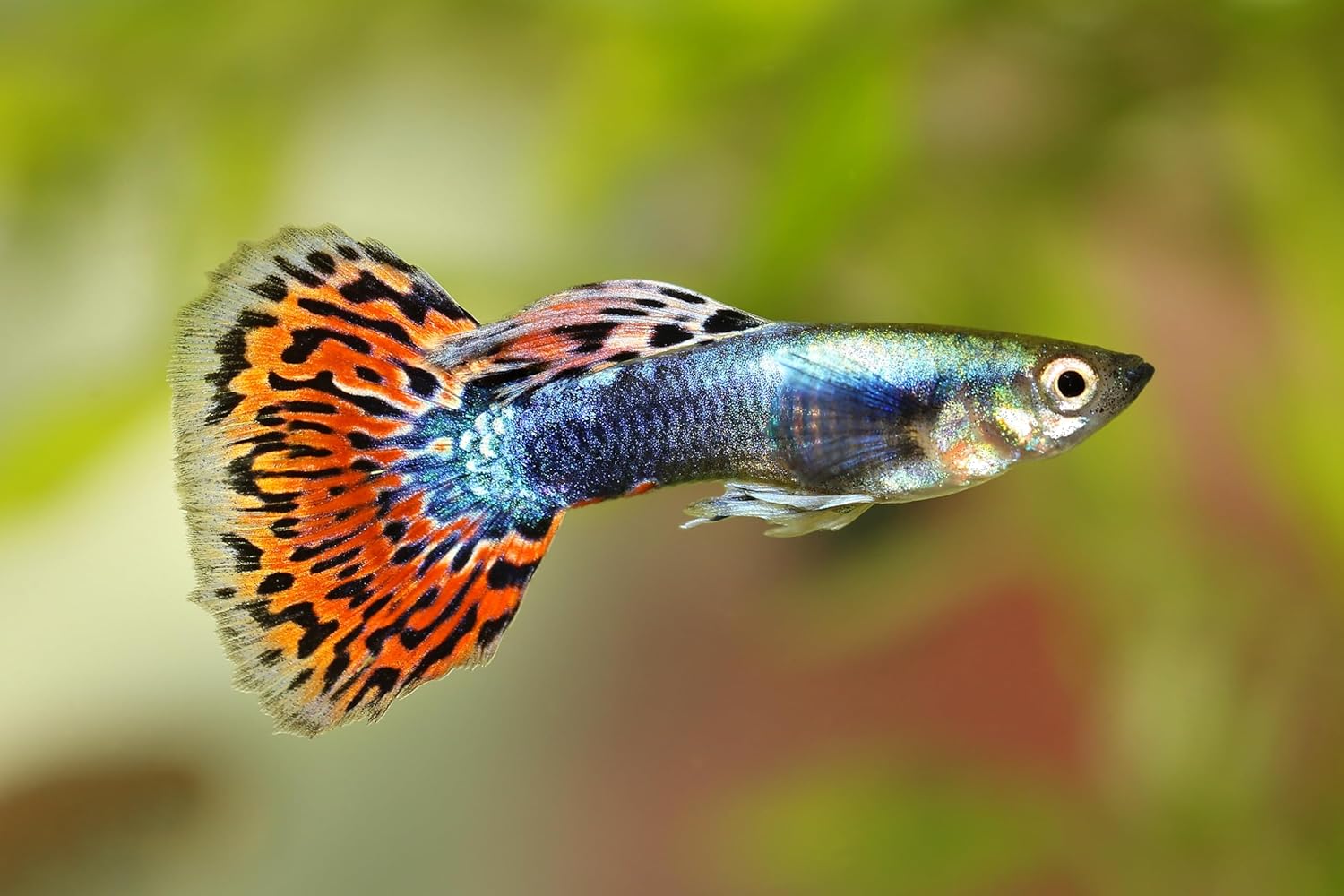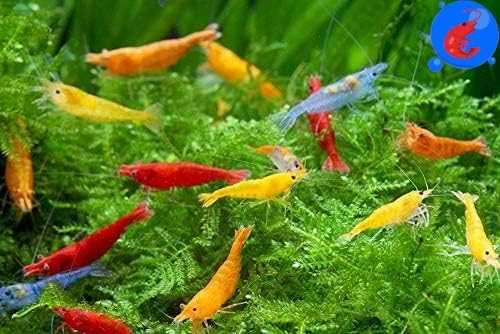
Starting a freshwater aquarium can be an exciting and rewarding experience for anyone interested in fishkeeping. However, choosing the right fish for your tank as a beginner can be overwhelming. With so many species available, selecting fish that are easy to care for and compatible with each other is essential. In this article, we will introduce you to the 10 top freshwater aquarium fish for beginners to start their journey in the hobby.
When selecting beginner fish for a freshwater aquarium, it’s crucial to consider factors such as size, temperament, and water condition requirements. By choosing robust, peaceful, and adaptable fish, beginners can learn the ropes of maintaining a thriving aquatic environment without the added stress of dealing with complex care needs or aggressive tank mates. Furthermore, understanding basic concepts of fishkeeping, such as water chemistry, filtration, and feeding, can significantly aid in the success of your new aquarium.
In the following list, we will provide insights into some of the easiest freshwater fish to care for, ensuring a positive experience for anyone new to this wonderful hobby. Our goal is to help you create a thriving underwater ecosystem in your home, filled with beautiful and healthy fish, while also enhancing your own skills and knowledge of fishkeeping.
Understanding Freshwater Aquarium
Setting up a freshwater aquarium involves several essential components that ensure the well-being of your aquatic pets. To start, selecting an appropriate tank size for your fish is crucial. A suitable tank size helps prevent overcrowding and the associated issues it causes, such as poor water quality and fish stress.
Next, we’ll discuss the critical aspect of water temperature. Different fish species have varying temperature preferences, so it’s essential to research the specific requirements of the fish you intend to keep. Maintaining a consistent water temperature is crucial for fish health, and using a heater and thermometer can help achieve this stability.
Another vital element of a freshwater aquarium is the filtration system. The filter keeps the water clean by removing waste, debris, and harmful chemicals. The three types of filtration—mechanical, chemical, and biological—work together to ensure optimal water quality. A good water filter is vital in sustaining a healthy environment for your fish to thrive.
Regular water changes are essential in a freshwater aquarium as they help maintain water quality. Changing about 25% of the water every two weeks can prevent harmful concentrations of waste and chemicals from building up. This process also replenishes essential nutrients and minerals, promoting a stable and healthy environment.
Algae are a common occurrence in any aquarium, but excessive growth can negatively impact water quality and the overall appearance of your tank. To control algae, avoid overfeeding your fish, reduce light exposure, and clean the tank regularly. Introducing algae-eating species can also be an effective method to manage unwanted algae growth.
In conclusion, a well-maintained freshwater aquarium requires attention to details like water temperature, filtration, water changes, and algae control. By providing a clean and stable environment, your fish can thrive, allowing you to enjoy the perks of a thriving freshwater aquarium in your home.

Choosing Your Fish
When setting up a freshwater aquarium for beginners, it’s essential to choose fish that are hardy, easy to care for, and compatible with each other. One popular option is the neon tetra, a small tropical fish known for its bright colors and peaceful temperament. These energetic fish are a great addition to a community tank, and they enjoy being in schools.
Another great option for beginners is guppies. These livebearers come in various colors and patterns, making them attractive for any aquarium. Easy to care for and known for their adaptability, guppies are an excellent choice for those just starting out in the hobby.
Corydoras, or cory catfish, are small, bottom-dwelling fish that are both hardy and peaceful. They can adapt to various water conditions, and with over 160 species, there is a lot of variety among them. Bronze cory, albino cory, and panda cory are some of the most popular species for beginner tanks.
Betta fish, also known as Siamese fighting fish, are another popular choice for novices. Known for their vibrant colors and long fins, bettas are relatively low maintenance and can be kept in smaller tanks. However, it’s crucial to note that male bettas are territorial and should not be housed together.
Barbs, such as cherry barbs, are active and hardy shoaling fish. They are an excellent addition to any community aquarium, but keep them in a group. Remember that some barb species, like tiger barbs, can be nippy and may not be suitable for all tankmates.

Goldfish are often the quintessential beginner fish, as they are hardy and can handle various water conditions. However, they require larger tanks and can produce a lot of waste, so keeping them in an appropriate setup is essential.
Mollies and platies are also suitable options for beginners. These peaceful livebearers are easy to care for and come in various colors and patterns, making them an attractive addition to any aquarium.
Like the harlequin rasbora, Rasboras are small, school fish that are hardy and peaceful. They prefer planted tanks and make a great addition to community aquariums.
Lastly, some smaller pleco species, such as the bristlenose pleco, are suitable for beginner aquariums. These catfish help control algae and are known for their unique appearance, but do your research to ensure they won’t outgrow the tank.
In conclusion, a wide range of fish species are beginner-friendly. Carefully selecting your fish and providing proper care will ensure a thriving, harmonious freshwater aquarium.
Providing Proper Diet
When it comes to feeding our beginner-friendly fish, it is important to provide a balanced diet that meets their nutritional needs. Most aquarium fish are either omnivorous, meaning they eat both plants and animals or herbivorous, which means they primarily consume plant-based foods.
For omnivorous fish, a diet of vegetables and sinking pellets can be a healthy option. Vegetables are an excellent source of vitamins and minerals while sinking pellets provide a nutritionally well-balanced meal. When choosing vegetables for our fish, we should opt for ones like zucchini, spinach, and peas, which are easy for fish to digest.
Sinking pellets, however, are great for bottom-dwelling fish like Corydoras. These little fish enjoy scavenging along the tank floor, and sinking pellets ensure they receive the necessary nutrients. Our gentle, omnivorous fish may also enjoy occasional treats like frozen bloodworms. These treats should be provided infrequently, as they are high in nutrients, and overfeeding them can cause potential health issues.
For herbivorous fish, providing a diet rich in vegetables is crucial. This can be achieved by offering a variety of leafy greens, other plant-based foods, and high-quality algae wafers to supplement their diet. It is essential to regularly rotate the vegetables we feed our aquarium fish to prevent nutritional imbalances and boredom.
Providing adequate nutrition is especially important to ensure their survival and growth when caring for baby fish. We should offer suitable foods for the specific species and closely monitor their development.
Remember to adjust the portion sizes based on our fish’s size and activity level and feed them according to their needs. By providing a proper diet, we can help ensure our beginner-friendly fish stay happy and healthy in their new aquatic home.
Creating a Community Aquarium
When setting up a community aquarium, choosing a variety of peaceful fish species that can coexist without conflicts is essential. Selecting a mix of schooling and non-schooling community fish will ensure a harmonious, vibrant, and active environment.
We recommend starting with hardy, beginner-friendly species that can adapt to various water conditions. One popular option is the Molly, which can easily breed and live harmoniously with other fish. Another popular choice is the Guppy, known for its low-maintenance nature and beautiful tailfins.
When planning your community tank, add a few schooling fish to create a sense of movement and dynamism. For example, the White Cloud Mountain Minnow and the Zebra Danio are two great beginner-friendly schooling fish. Adding diverse fish species with different swimming patterns and behaviors will make your aquarium more captivating and enjoyable.
To ensure harmony in your community tank, consider the fish’s size in addition to their temperament. Smaller species, like the peaceful Honey Gourami and the active Harlequin Rasbora, can be great additions due to their similar size and favorable compatibility.
Lastly, providing ample plant life, hiding spots, and decorations within your aquarium will give your fish a sense of security and comfort. This will enhance the visual appeal of your community tank and contribute to its inhabitants’ overall well-being.
You’ll enjoy a thriving, visually appealing, and harmonious freshwater ecosystem by carefully selecting a diverse range of peaceful, adaptable community fish and thoughtfully designing your aquarium layout.

Maintaining Your Aquarium
In order to keep your freshwater aquarium thriving, several aspects must be considered. By focusing on these key components, we can ensure the well-being of our aquatic friends and maintain a healthy, low-maintenance environment.
First, it’s crucial to keep the water clean and clear. Regular water changes are essential to achieve this. We recommend replacing 25% of the tank water every two weeks. This helps remove waste, excess food, and harmful chemicals accumulated over time.
A vital part of maintaining water quality is using a proper filter. Filters help clear the water by removing debris and providing essential biological filtration. This supports the growth of beneficial bacteria that break down waste products. Be sure to clean the filter media regularly and replace it as needed according to the manufacturer’s instructions.
Controlling algae is essential for a healthy aquarium. Algae can quickly overgrow and obstruct light, making it difficult for your fish and plants to thrive. To prevent excessive algae growth, limit your tank’s direct sunlight and avoid overfeeding, as excess nutrients can fuel algae blooms. Additionally, introducing some algae-eating species, such as snails or certain fish, can help control algae naturally.
Proper temperature regulation is another key aspect of maintaining your aquarium. A reliable heater ensures stable water temperatures, especially for tropical fish. Invest in a high-quality heater and monitor the water temperature regularly, adjusting as necessary to maintain a consistent range.
Finally, choosing the right fish is one of the most important factors in maintaining an easy-to-care-for aquarium. Select low-maintenance species that are hardy, peaceful, and suitable for beginners. Some great options include white cloud minnows, cherry barbs, goldfish, guppies, neon tetras, and cory catfish.
By following these guidelines, we can ensure a thriving and vibrant aquarium that is enjoyable and easy to maintain.
10 Top Freshwater Aquarium Fish for Beginners FAQs
What are the best small fish for a beginner aquarium?
Among beginner aquariums’ best small fish species are neon tetras, celestial pearl danios, and white cloud minnows. These small fish are relatively easy to care for and have a peaceful temperament, making them an ideal choice for beginners. They also work well in schools or small groups, adding beautiful and lively colors to your aquarium.
Which hardy fish species are suitable for beginners?
Some hardy fish species suitable for beginners include goldfish, guppies, and cherry barbs. These fish are known for their adaptability and resilience, making them ideal for newcomers to the hobby. Goldfish, in particular, are a popular choice for beginners due to their hardiness and ability to live up to 15 years.
What tropical fish can live together in a community tank?
In a community tank, tropical fish like harlequin rasboras, lambchop rasboras, and pygmy Corydoras can coexist peacefully. These fish generally have friendly temperaments and similar water conditions requirements, allowing them to thrive in a shared aquarium environment. However, it’s essential to research specific species compatibility and introduce new fish to your community tank with care.
What long-life fish are suitable for home aquariums?
Long-life fish suitable for home aquariums include goldfish, which have an average lifespan of 10-15 years, and betta fish, which can live for 3-5 years. When provided with proper care and a suitable environment, these fish species can bring years of enjoyment and companionship to your home.
What are the easiest freshwater fish to care for?
The easiest freshwater fish to care for include white cloud minnows, cherry barbs, goldfish, guppies, neon tetras, and cory catfish. These species require relatively simple maintenance and care routines, making them excellent choices for beginner aquarium enthusiasts. They are resilient, non-demanding, and usually peacefully coexist with other fish species.
Which beginner-friendly fish are best for a 10-gallon tank?
A 10-gallon tank provides a perfect environment for small, beginner-friendly fish like guppies, neon tetras, and lambchop rasboras. These fish work well in small groups and are relatively low-maintenance, adapting well to the limited space offered by a 10-gallon aquarium. It is crucial, however, to avoid overstocking your tank and ensure that the fish you choose are compatible.